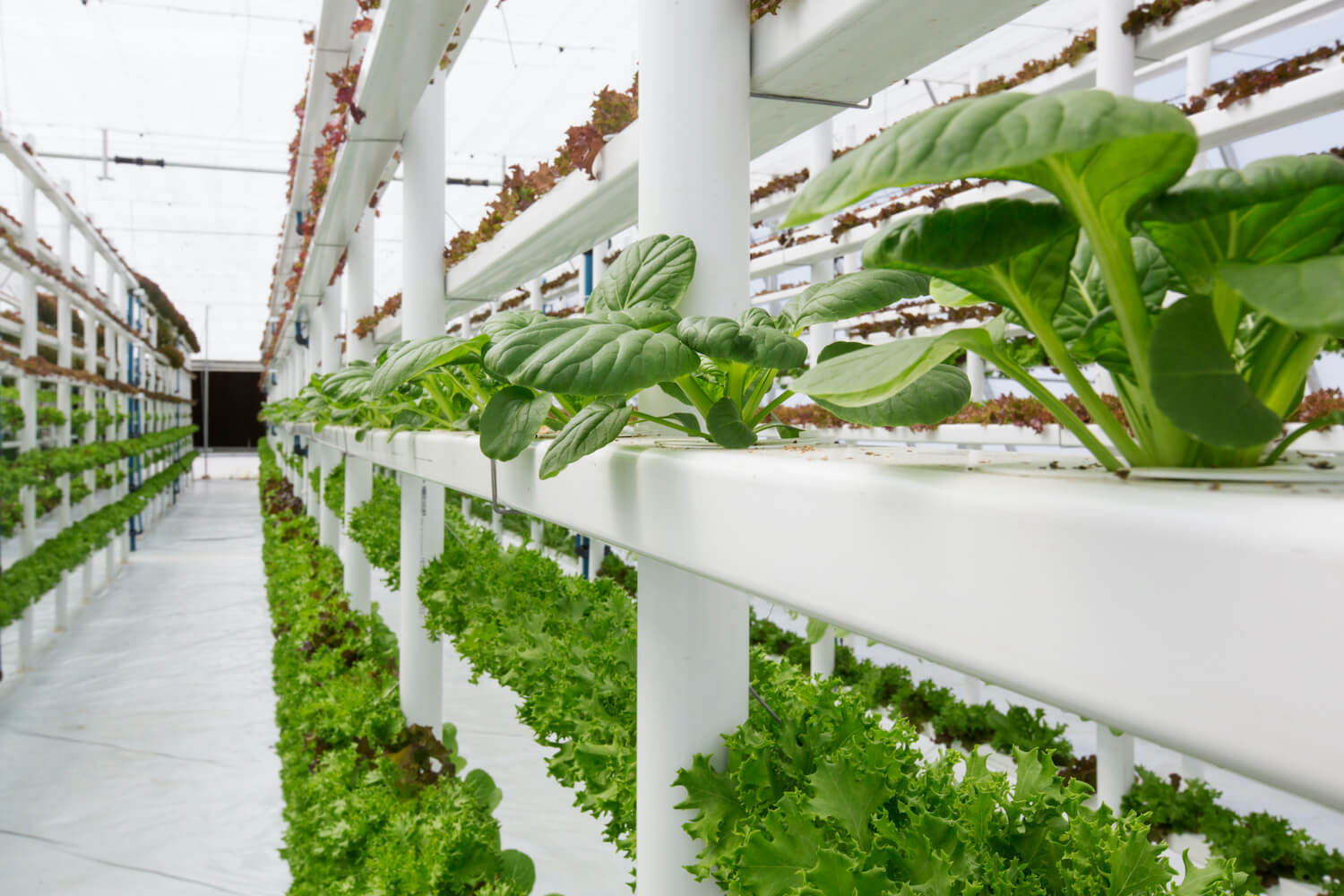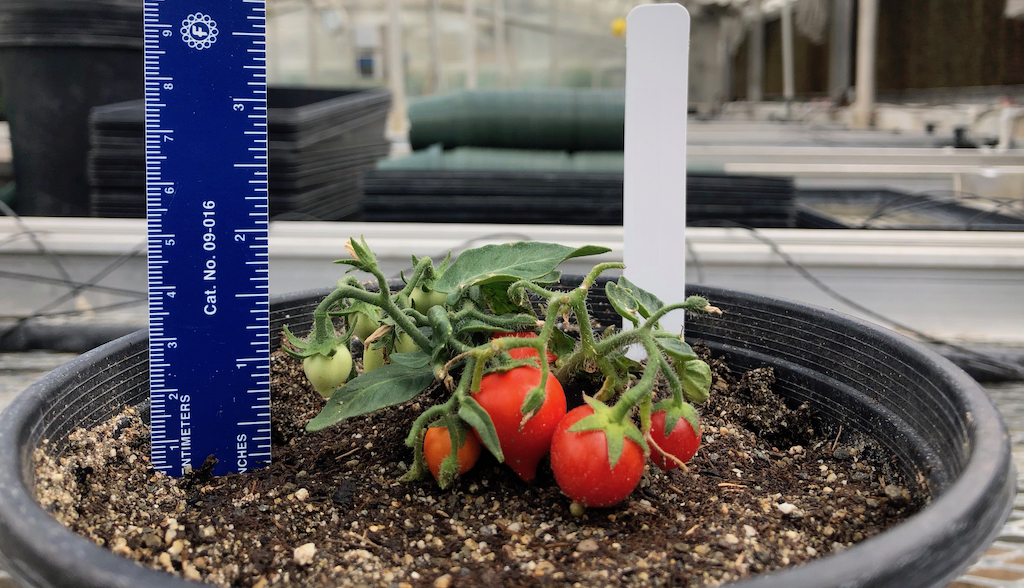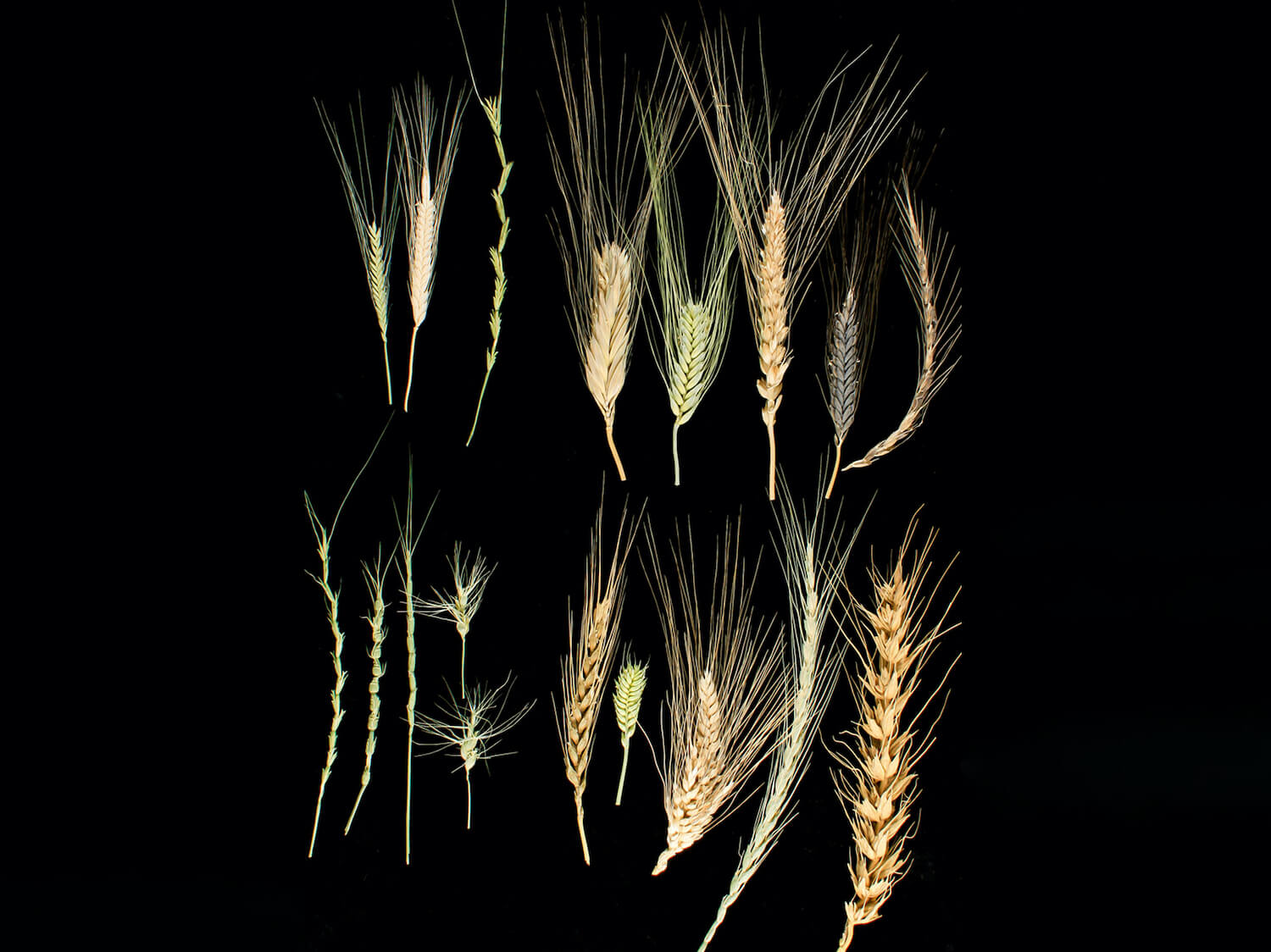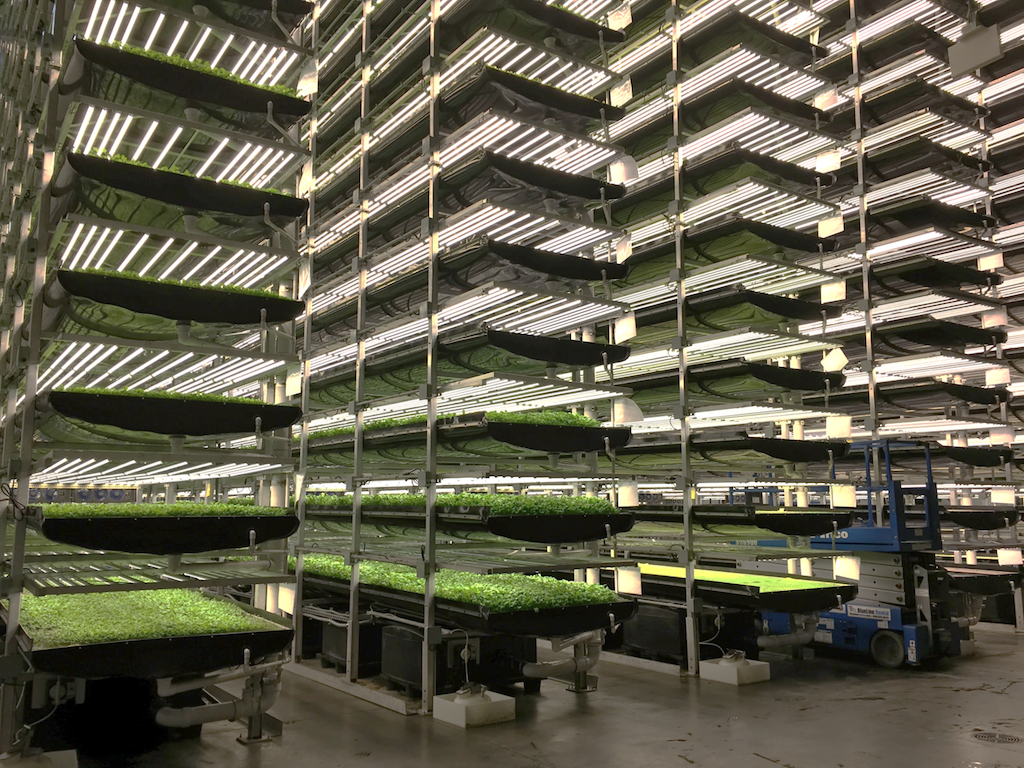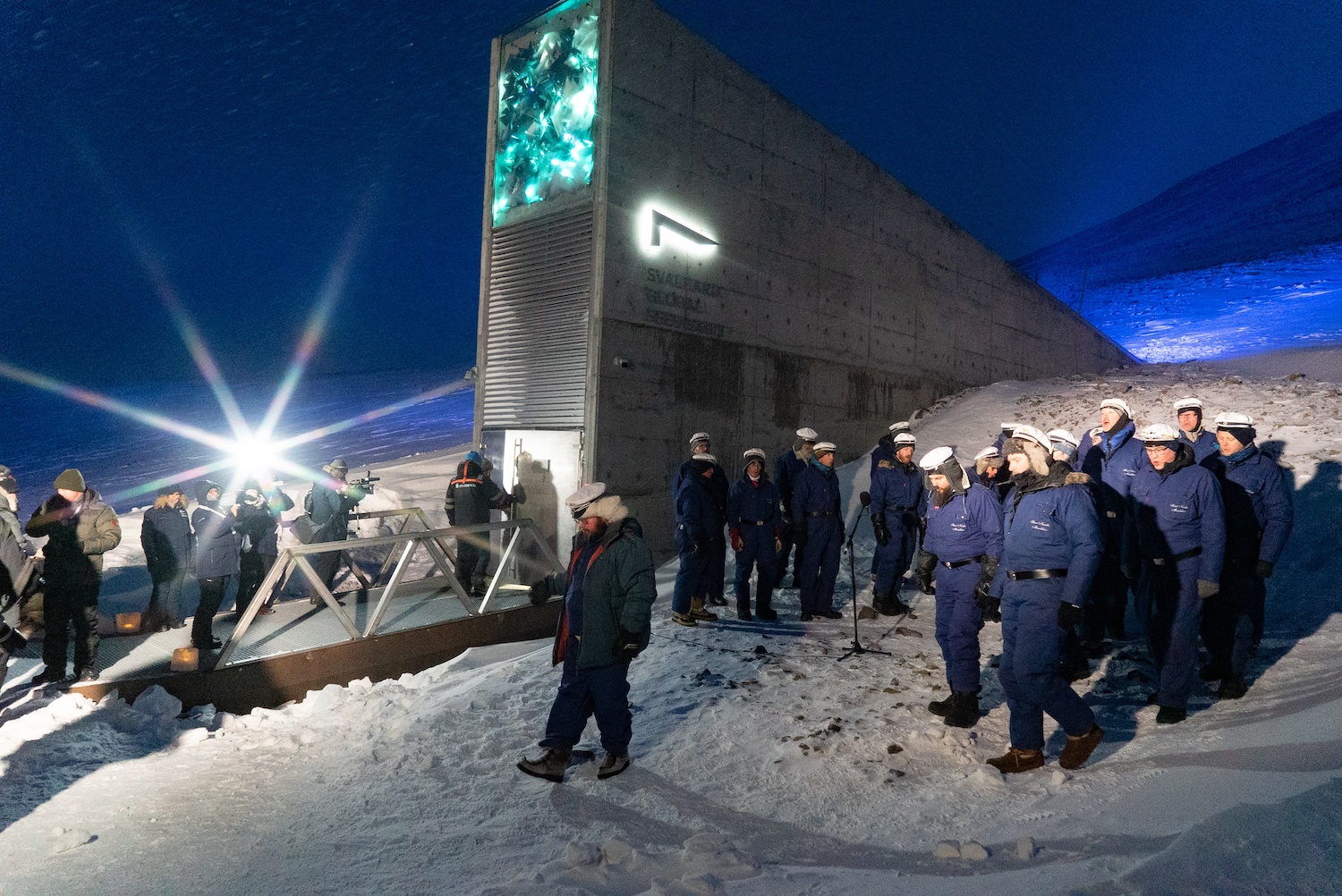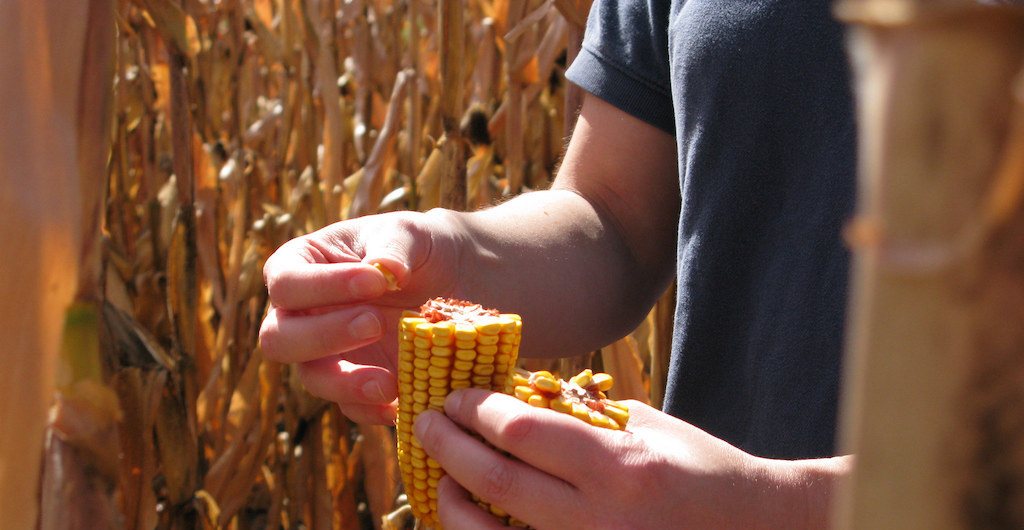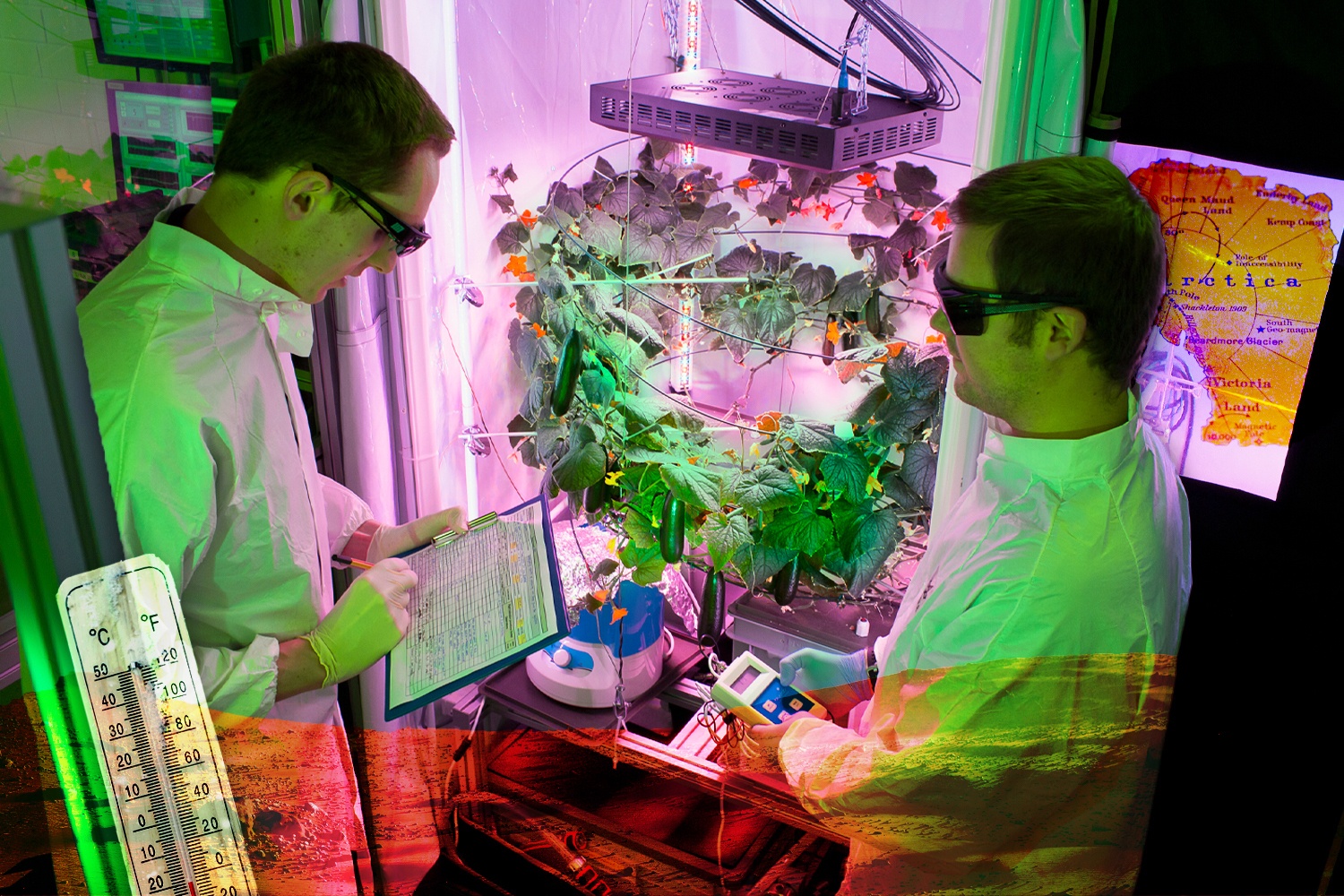
Photo: EDEN ISS | Graphic: Talia Moore for The Counter/iStock
Indoor farming is helping an isolated NASA crew thrive in Antarctica, and could reap future psychological benefits for space explorers.
Polar night is finally over at Neumayer Station III, a remote research station perched on Antarctica’s Ekstrom Ice Shelf. For almost 64 days, the 10 members of the skeleton winter crew, the overwinterers—a cook, a doctor, and eight engineers and researchers—did not see the sun. For those 63 days, 23 hours, and 18 minutes, perpetual darkness was broken only by brief periods of twilight, when the sun approached but did not rise above the horizon. Average temperatures in June and July fluctuate between 0 and -24 degrees Fahrenheit, and the station is often pounded by winds that can exceed 100 kilometers per hour. A webcam of the station feeds photos to a livestream every 10 minutes, but during snowstorms it may not be possible to see the station at all.
These extreme conditions make the Ekstrom Ice Shelf an ideal setting to test the technology that could one day allow humans to grow food in inhospitable settings like the moon or Mars. Additionally, the extreme isolation of Neumayer Station and its residents make them ideal subjects in a study of how fresh produce could impact the well-being of astronauts during long-haul space travel.
That’s right: It’s not just the technology that allows us to grow food without sun, soil, or rain under the microscope. Jess Bunchek, a plant scientist from NASA’s Kennedy Space Center, and the other crew members are subjects of a survey meant to assess how working in the greenhouse and eating fresh produce affects their mental state and well-being. The crew also had pictures of their brain taken by a magnetic resonance imaging (MRI) machine before traveling to Antarctica. After they return, their brains will be photographed again to see how they changed over time. Researchers will also look at cognitive and biochemical changes in the blood and saliva.
“It’s a very harsh external environment,” said Ray Wheeler, a plant physiologist with Kennedy’s Exploration Research and Technology program, who has been on the project’s advisory board from the beginning. “You’re very isolated as a human crew so that gives you the kind of analog, or the situation that you want to compare with, say, a space crew…Once they’re there, they can’t get back. In the winter, I mean, there’s no coming back.”
“Just having a simulation in the next room, where they go home at night, it’s not the same psychological load as they have when they are truly remote and on their own.”
Bunchek arrived in Antarctica in late January on the icebreaker RV Polarstern, German for “polar star.” In a normal year the ship would have only carried the group’s gear and supplies, but because of the ongoing pandemic, it also ferried the overwintering crew itself—adding at least a month to their time away from home. Bunchek isn’t scheduled to leave until early 2022, after spending more than a year in one of the world’s harshest climes.
“You can’t really test psychology without putting the person in an extreme environment,” explained Matt Nugent, a NASA contractor, and Bunchek’s manager. “Just having a simulation in the next room, where they go home at night, it’s not the same psychological load as they have when they are truly remote and on their own.”
Alex Stahn, an assistant professor at the University of Pennsylvania who studies how spaceflight and related stressors like isolation and confinement impact the human brain, agreed. Stahn said more controlled, laboratory-based studies of isolation and confinement are generally limited to 45 days, so conducting studies in remote locations like Antarctica is necessary for studying long-term isolation.
Of course, there are limitations to an experiment design that doesn’t include a control group.
“The ideal approach is, you don’t give half the crew fresh food, or you don’t let them see the plants and the others you do, you kind of set up a control,” said Wheeler. “That wouldn’t have been very well received by the crew down there.”
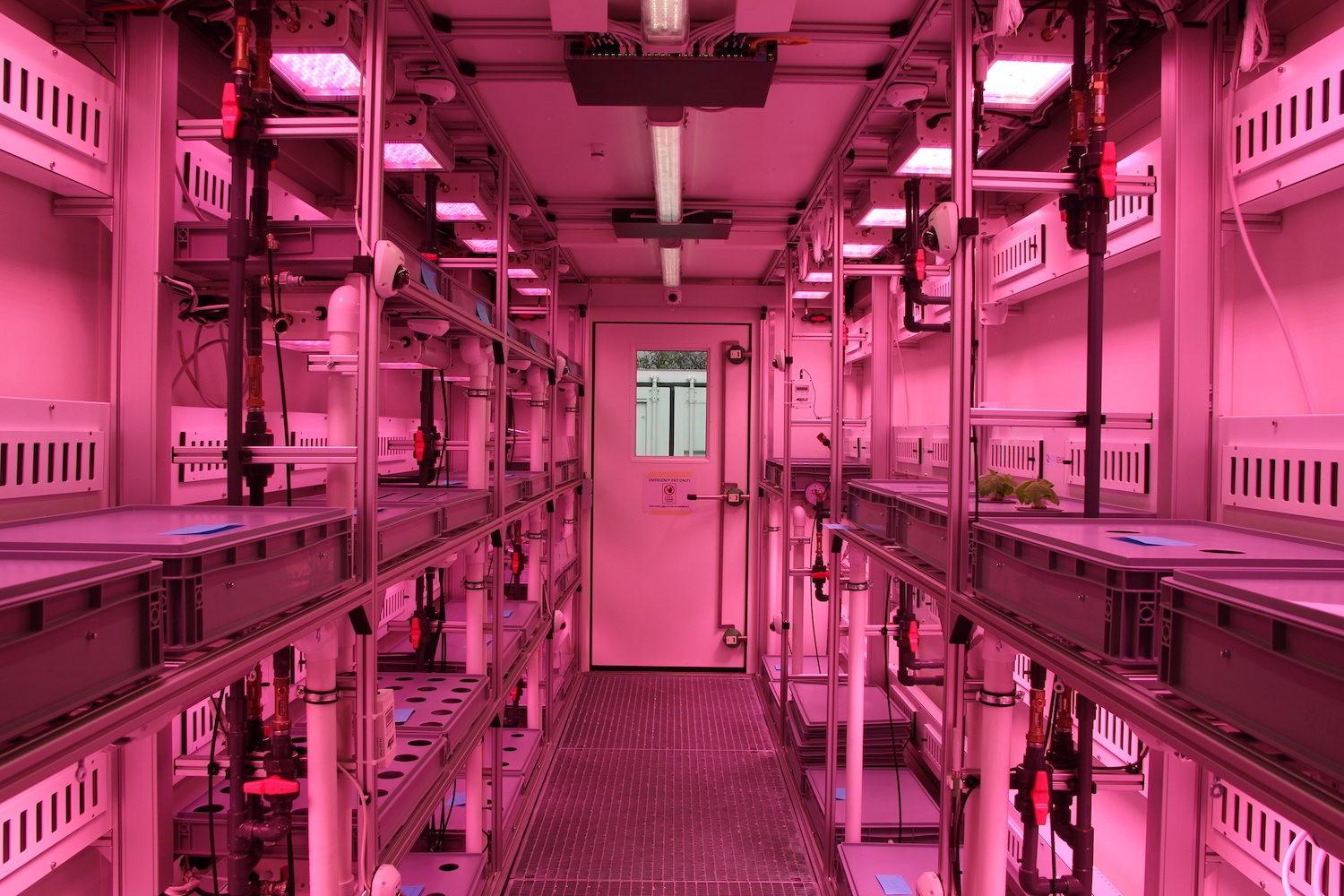
The greenhouse is a standalone structure about 400 meters from Neumayer Station III. Like the station itself, EDEN ISS is raised on stilts, which are necessary to avoid being warped under heavy snowdrifts and shifting ice.
EDEN ISS
In lieu of something so ethically dubious, Bunchek and the other crew members first responded to a survey created by Stahn in November 2020, prior to their departure for Antarctica. This established a kind of baseline. Since arriving at the station, they have completed the survey on a monthly basis, answering questions like: How much time they spend in the greenhouse each month; what kind of activities they do there, be that planting or harvesting or cleaning; how the plants make them feel; and whether they enjoy eating the food that is harvested. After they return and Stahn has the before-and-after brain scans, he’ll look at patterns of change and to what extent they correlate with the overwintering crew’s survey responses.
Anecdotally, the greenhouse has already proven hugely beneficial to the overwintering crew. The other team members, including those researching geophysics, hydroacoustics, meteorology, or climate, are reportedly eager gardening assistants.
“Whenever [Bunchek] needs help, she reports she has no problem getting volunteers from the crew,” Nugent said. “They tend to want to come into that space and be around the green plants, because everything else is just snow and steel.”
“They tend to want to come into that space and be around the green plants, because everything else is just snow and steel.”
“Personally, I have enjoyed how working in the greenhouse daily stimulates all of my senses,” Bunchek wrote in an email from Antarctica. “It’s a warm, colorful, fragrant environment…and the smell of fresh peppers, cucumbers, basil, mint, tomatoes, parsley–all the crops–is simply wonderful!”
She adds: “More than anything, I enjoy eating the produce raw. Anything we eat here that isn’t grown in the greenhouse is pre-packaged as either frozen or dried, so having the chance to eat fresh, raw produce is a treat!”
The greenhouse is a standalone structure about 400 meters from Neumayer Station III. Like the station itself, EDEN ISS is raised on stilts, which are necessary to avoid the fate of Neumayer Stations I and II—warped under heavy snowdrifts and shifting ice.
As with all indoor or vertical farms, this method of farming is called controlled environment agriculture, because all the growing conditions—light spectrum, temperature, humidity, nutrient delivery, watering, even carbon dioxide levels—are indeed carefully controlled. However, EDEN ISS is supposed to emulate the challenging conditions of space, which are far greater than those for indoor farms on Earth.
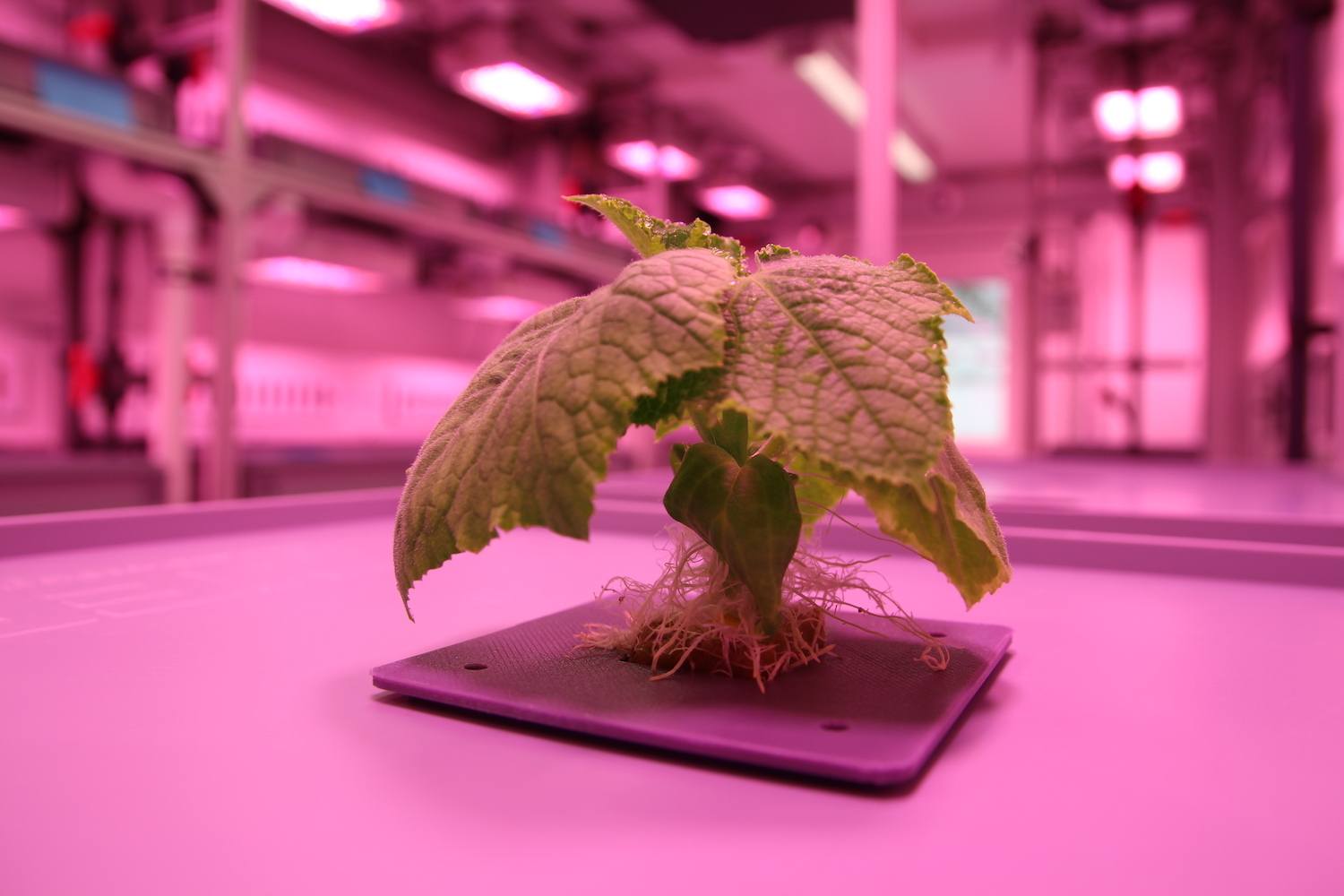
EDEN ISS is supposed to emulate the challenging conditions of space, which are far greater than those for indoor farms on Earth. Crops are selected because of their size, shape, or other physical characteristics and nutritional value.
EDEN ISS
In addition to cucumbers, basil, mint, tomatoes, parsley, Bunchek is also growing varieties of peas, beans, broccoli, cauliflower, and new pepper and mustard green cultivars, all of which were selected either because of their size, shape, or other physical characteristics, or for their nutritional value.
“So often in space, we’re constrained by power, volume, mass, things like that,” said Wheeler. “We try to look for shorter growing species, maybe dwarf varieties within those species. Growing sugarcane that’s 12 feet tall just isn’t a good match.” They also want varieties that grow quickly and have high yields.
In addition to size and shape, they’re looking at the nutritional content of plants, and specifically for nutrients that can be difficult to deliver by other means, or that degrade over time, like Vitamin C and Vitamin B1.
“You’re not going to get a lot of nutrition out of lettuce,” Wheeler explains. But: “Choose a colored variety, then you can get anthocyanin. That’s a pigment that has some antioxidant qualities.”
“We try to look for shorter growing species, maybe dwarf varieties within those species. Growing sugarcane that’s 12 feet tall just isn’t a good match.”
Even though there’s gravity in the EDEN ISS, one of the technologies NASA is testing this season is a plant watering system that can function in u-gravity, as on the International Space Station.
Another key factor being closely monitored and tracked is operational time. While Bunchek and the other crew members enjoy spending time in the greenhouse, the goal is to keep hands-on time to a minimum, because the astronauts who eventually use this system won’t have a lot of excess time. (The working hypothesis is that hands-on gardening time is less important to mental well-being than spending time near the plants or knowing that they’re there.)
There’s a lot riding on this greenhouse, whose name evokes the garden of Genesis and the beginning of new life. It can be hard to lose track of in the minutiae of seed varieties, LED lights, and watering systems, but the ultimate goal of EDEN ISS and other similar projects—like the micro-garden on the International Space Station called VEGGIE, described as the size of a piece of carry-on luggage—is to support long-term space travel or even colonization.
“Food has been foundational to human exploration for centuries,” said Nugent. “We often talk here in the halls about Shackleton and Franklin, the great explorers…sometimes I really feel this is all in support of the great human adventure and exploration and expanding horizons, and food is a foundational aspect of that.”
Beyond providing nutrients and sustenance, Wheeler points out that at a certain volume, plants can help sustain life in other ways.
“If you’re going to assume that it’s going to fail, and taking backup food to support a failure, you might as well not even have had it. Then it just becomes a toy or an experiment.”
“When you get to a sufficient scale, you’re now generating oxygen, and enough oxygen, then it’s beginning to have an impact in terms of your life support systems,” Wheeler said. According to the most recent research, Wheeler said, 20-25 square meters of plants growing continuously under white, high-intensity light can generate about enough oxygen for one person.
If indoor farming ever did become a pillar of the astronaut’s life support system, there would be no room for error.
“As soon as we want to say that we are being reliant on this food source, as part of the nutritional needs of the crew…it can’t fail,” said Nugent. “If you’re going to assume that it’s going to fail, and taking backup food to support a failure, you might as well not even have had it. Then it just becomes a toy or an experiment.”
Finally, I ask about the state of astronaut salad dressing, to make fresh greens even more palatable and pleasurable.
“Once we get this down,” said Nugent, “convincing the astronaut office to pack packets of something in there I think would be a wonderful marker for us. It shows that we’re producing enough salad.”

